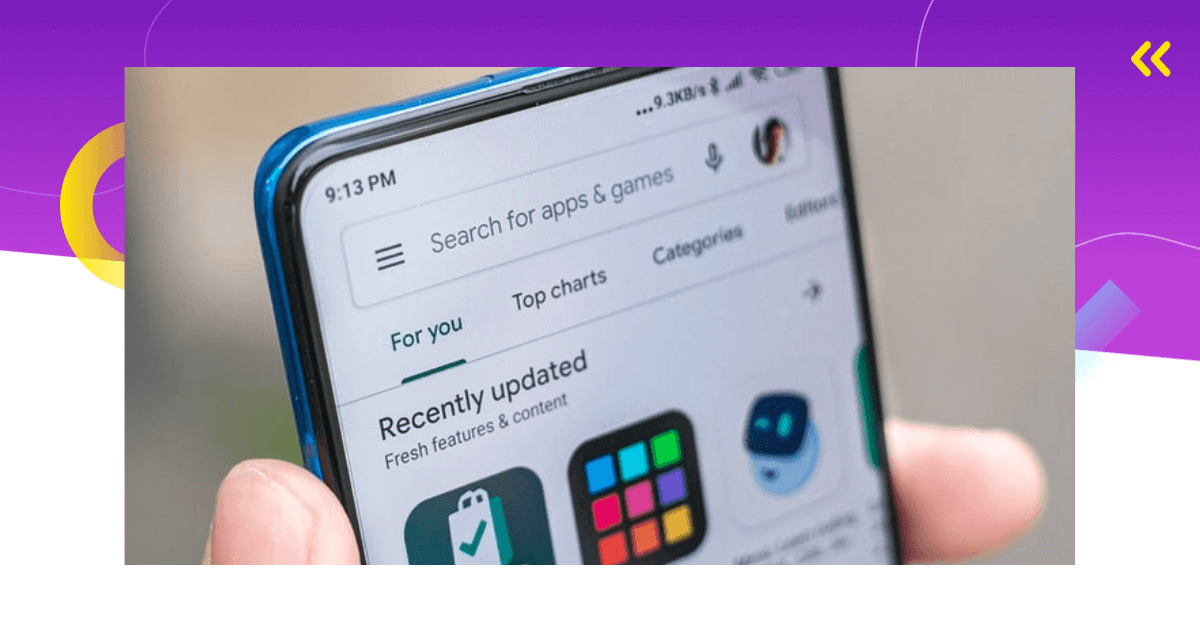You want your user acquisition efforts to pay off and we get you.
To achieve this with hyper casual games you will need plenty of data.
Look no further.
Here’s the only analysis you’ll need. We give you an overview of the most recent and relevant market research on hyper casual games coming from Adjust and Unity.
In this article, we’ve summarized the most important data and recent trends for this game genre. You can use this information to improve both your game and your advertising.
Methodology
This research is based on a report by Unity and Adjust called Hyper casual gaming in 2020.
In this report, the data was collected from 1,000 best performing apps and all other apps the Adjust’s system tracks. Unity has provided its ad campaign data to compare the genre to others.
To start with, we’ll explain the basic features of hyper casual games and how their monetization model works.
We’ll talk about what caused this genre’s growth in Q1 2020 across 6 markets and which of them saw the biggest growth.
You’ll also find out which metrics are most important to look at while trying to get the user to install the game, and those that should be tracked after you get the install.
Finally, you will learn how to balance between in-app advertising and user retention to maximize your profits.
The Rise of Hyper Casual Games
What makes hyper casual games unique as a mobile game genre is just how simple they are. They are known for their short, fun, and gripping mobile gaming experience.
This is possible thanks to a clean design and basic mechanics behind the game.
When it comes to monetizing a hyper casual game, the majority of their earnings – 95%, comes from ads. That’s because ads blend into the gaming experience. Some would even go so far as to define hyper casual games as a separate business model rather than a game genre.
Since they first appeared in 2017, hyper casual game genre’s popularity has been on the rise. However, Q1 of 2020 is when this game saw tremendous growth, with more than doubled global installs – 103%, in comparison to Q4 2019.
When you look at their basic features, this comes as no surprise.
Let’s take a closer look at what a hyper casual game is made of.
Easy to Play
These games require no pre-game instructions. This is the type of game you will be reaching for when you have a short amount of time to spend. However, features make players repeatedly hit the replay button.
A Universally Fun Experience
This type of game is mainstream – on purpose. It is designed to fit into almost every demographic.
A Loyal Player Base
As this format is highly addictive, the players are open to similar gaming experiences. This makes it ideal for advertising your other apps within the game, along with other engagement techniques.
In-App Ads
Ads are naturally incorporated into the game and shown frequently.
Low CPI
These games depend on low CPI because acquisition costs for these types of games have to remain low.
Only High Performers Remain
What differs hyper casual games from others is how fast they are produced. After that, the soft launch phase will give you insight if your game has hit potential. If it fulfills your initial expectations, it can be further optimized for best performance.
Data-Driven
Finally, it all comes down to testing different formats. When you market a hyper casual game, data is king.
All of these features made hyper casual games alter the app monetization universe.
Wondering how contemporary issues such as COVID-19 impact the genre? Keep reading.
The Effect of Covid-19 on Hyper Casual Games
The moment the world’s economy stopped due to the COVID-19 lockdown, mobile gaming blossomed. When people were left at home and had nothing to do, they played games, including hyper casual games.
The report observed hyper casual app install and session increases throughout six countries: China, Japan, South Korea, the U.S., Germany, and the U.K. The period taken into account was from December (Q4 2019) till the end of March when the pandemic was at its peak(Q1 2020).
During this period, the number of installs reached a total increase of 103%.
China was the absolute winner, as they saw a 3.5x increase in installs over the observed period. It is followed by Korea and Japan.
During the lockdown, marketers have noticed a significant increase in first-time downloads and organic installs.
What does all of this mean for mobile game marketers?
When comparing data from this period and making future predictions, marketers have to take these specific fluctuations into account.
User Acquisition Trends for Hyper Casual Games
In order to better understand the trends for hyper casual games, it is important to know which data to look at.
We know the main monetization channel in this genre is ad revenue. For this to work, keeping CPIs low and conversion rates high is a must.
Therefore, if you’re looking to market a hyper casual game, make sure you know the following.
What are the average costs and numbers of hyper casual game installs?
How about ad conversion rates?
We give you the answers below.

User Acquisition Costs for Hyper Casual Games
When it comes to acquisition costs, they highly depend on the country. According to data from Unity, there were significant changes in acquisition costs from September till the end of March.
Traditionally, the U.S. is the most expensive for user acquisition. The starting CPI was approximately 0.63 in September 2019 and dropped down to 0.42 at the end of March.
To compare, the APAC region started the same period with 0.31 and ended it at 0.20.
LATAM region also experienced a significant impact on the CPI average, thus lowering the world’s average. During Q1 2020, the global user acquisition cost averaged at 0.17.
Wait a minute.
Why would you advertise for 0.42 if you can get the user to download for 0.20?
Well, cheap installs aren’t necessarily high-quality ones. User engagement and conversion rates are equally important.
All things considered, before going all-in on paid advertising, define the areas where you want to advertise.
You can define the importance of CPI vs. engagement by taking a look at the number of installs per thousand impressions.

How Many Installs Hyper Casual Games Get?
After your game ad is shown a thousand times, how many installs should you expect? With this information, you will find it easier to effectively plan your advertising budget.
For hyper casual games, Unity’s data has discovered growth trends in all areas over the observed 6-month period.
The biggest change this period brought is that five more users would hit the install button.
Starting with 26 users, at the end of Q1 2020, 31 of them would install the game after stumbling upon an ad. That makes for an 18.2% increase.
Some areas affected these numbers significantly more than others. For example, APAC noticed an extreme increase of 71%.
To put it simply, user interaction with ads increased. Once attracted by the ad and engaged, these people will likely convert.
Here’s a good reason to advertise your hyper casual game in the U.S.
Even though the U.S. is the most expensive region when it comes to CPI, it has users who are more likely to install the game. It had an average of 30 installs per mile (IPMs). In comparison, EMEA averaged at 27.
All of this means hyper casual games have successfully engaged and converted prospects into players.
Conversion Rates for Hyper Casual Ads
So, how do you measure the ultimate goal of your hyper casual advertising efforts – conversions?
The relationship between three important metrics will help you get to the bottom of this.
Compare CTR, install rates, and conversion rates. All of these are equally important to understand your user’s path to conversion.
In Unity’s report, the APAC area reached a 24% CTR in Q1 of 2020.
Great, right? Not necessarily.
With a 13% install rate, this region came last.
Click through rate equals ad effectiveness. This is the metric to look at when you want to know if your ad is grabbing users’ attention. But this is in no case the only metric to rely on.
Users’ behavior in EMEA is completely different than in APAC. Despite the lowest CTR, they take the win with 17% ad clicks leading to installs.
Keep in mind that getting conversions is the most important thing in mobile advertising, and this includes anything from the first impression to the install.
The average conversion rate for this genre is 3.34% for Android and 2.72% for iOS. These numbers beat other popular genres such as action, adventure, and RPG.

What Happens After Users Install a Hyper Casual Game?
So you finally got the user to install your hyper casual game. What happens next?
If you’re a marketer, it is equally important to keep track of how users interact with the game.
This can be done through constant A/B testing with the goal of creating the most engaging experience possible. Split testing makes the foundation of hyper casual gaming.
Also, a marketer needs to keep track of these metrics:
- How much time users spend playing the game
- Effects of ads on user retention
- The optimal number of ads within the game
Adjust data reveals how in-app advertising affects the way users interact with the game.
Average Session Length for Hyper Casual Games and Other Genres
We’ve already mentioned that hyper casual games are designed to have shorter sessions than games from other game genres. Despite that, these games also need to make players stay as long as possible.
Session length in hyper casual games is in direct correlation to the game’s earnings.
According to Adjust, in Q1 2020 the average number of sessions per user and per day for hyper casual games is 1.56, which is 37% lower than the combination of all other game types.
Session length is where you can see the obvious difference. While it averaged at 19 minutes and 52 seconds for other game genres, hyper casual players typically stay in the game for 2 minutes and 39 seconds.
Another metric to look at for hyper casuals is stickiness. This is the ratio between daily active users and monthly active users.
When it comes to stickiness, hyper casual games scored 11%, which is two times less than with other game types.
But high churn rates are expected for this genre. When users leave hyper casual games, the next goal can be shifting them to the newest publisher’s game.

The Impact of Ads on Retention Rates
Every game’s goal is to create a player base that returns to the game on a daily basis. That’s why it’s important to track retention rates. This metric is tightly connected to the number of ads displayed within the game.
Adjust has compared retention rates of hyper casual and mid core games. The results for the first day after the install were similar, averaging slightly above 30% for both game types.
However, the period from day 2 to day 7 shows retention rates decreasing faster with hyper casual games. The biggest gap between the two happens one week after install, when mid core games retain 13.7% users, while hyper casuals keep 8.7% of them.
Mid core games are more complex by nature and need the player to play longer, so this isn’t surprising.
What happens 30 days after the install for both game types is that the retention rate drops down to 1% or less.

The nature of the game is not the only thing that affects user retention rates of hyper casual games. Another important factor is the number of ads people tend to tolerate within a game.
It’s quite simple, too many ads negatively affect user retention.
The market research on hyper casual games showed 4 ads in a minute are too many, causing the retention rate to decrease to 20%. When it comes to an acceptable number of ads, displaying under 2.5 ads in a minute will cause about half of the users to churn.

The Optimal Number of Ads for Hyper Casual Games
What ads represent for hyper casual games is direct monetization. Since this is what the business model itself relies on, the game should display the largest number of ads possible.
The formula behind hyper casual games is clear: reaching as many users as possible, entertaining them for a short period, and showing them a bunch of ads.
Showing more than 4 ads in a minute will result in revenue streams not higher than $35k in a month’s time.
So fewer ads is better?
The report compared games that showed 1 or fewer ads, 1-2 ads, and those with 2-3 ads. All of these managed to rack up $20k in revenue per month.
However, it seems that the optimal number of ads to show within a minute is 2-3, which allows companies to boost revenues by nearly 10%.

Lifetime Value of Hyper Casual Gamers
Knowing which metrics to keep track of is the key to marketing a hyper casual game.
CPI, user retention rate, and lifetime value (LTV) are metrics every marketer has to analyze.
Since every user has its worth, another metric that should be calculated for this game type is ARPU (average revenue per user).
So how much is the average hyper casual game user worth?
According to the report, $0.13.
Hyper casual game marketers can aim for more though.
The top 25% of these games make an average of $0.23. If they make it to the top 10%, the average revenue per user goes up to $0.30. This is 131% above the average.
Finally, hyper casual publishers are well aware their payout period is shorter than with, e.g. casual or mid core games.
For this reason, they should primarily strive to low CPI and high first-day retention. If these numbers are satisfying, the game is on a good way to becoming profitable.

Conclusion
To sum up, creating a successful hyper casual game is not an easy task, but you have one thing to rely on – data.
The key insights from this market research on hyper casual games include learning which metrics to look at and how to optimize your game for the best performance.
However, developers and publishers often fall into a rabbit hole of chasing the users away with too many ads. If you take the data from this article into account, you can prevent this from happening.
Still need advice on how to reach the top with your hyper casual game? Mobile game marketing is what we do and we’ll be glad to help you out.
For more market research on mobile games, subscribe to our newsletter!







Comments